What is "category"?
Kimonos have a concept similar to a dress code, which we call a "Kaku" (meaning class or rank).
There are different types of kimono according to this code, and our kimono are categorized according to these types.
We think it is difficult to understand for those who are not familiar with the types of kimono, so we introduce the types of kimono below.
| Tomesode | There are two types of Tomesode, Kuro-Tomesode and Iro-Tomesode. | |
| Kuro-Tomesode | ||
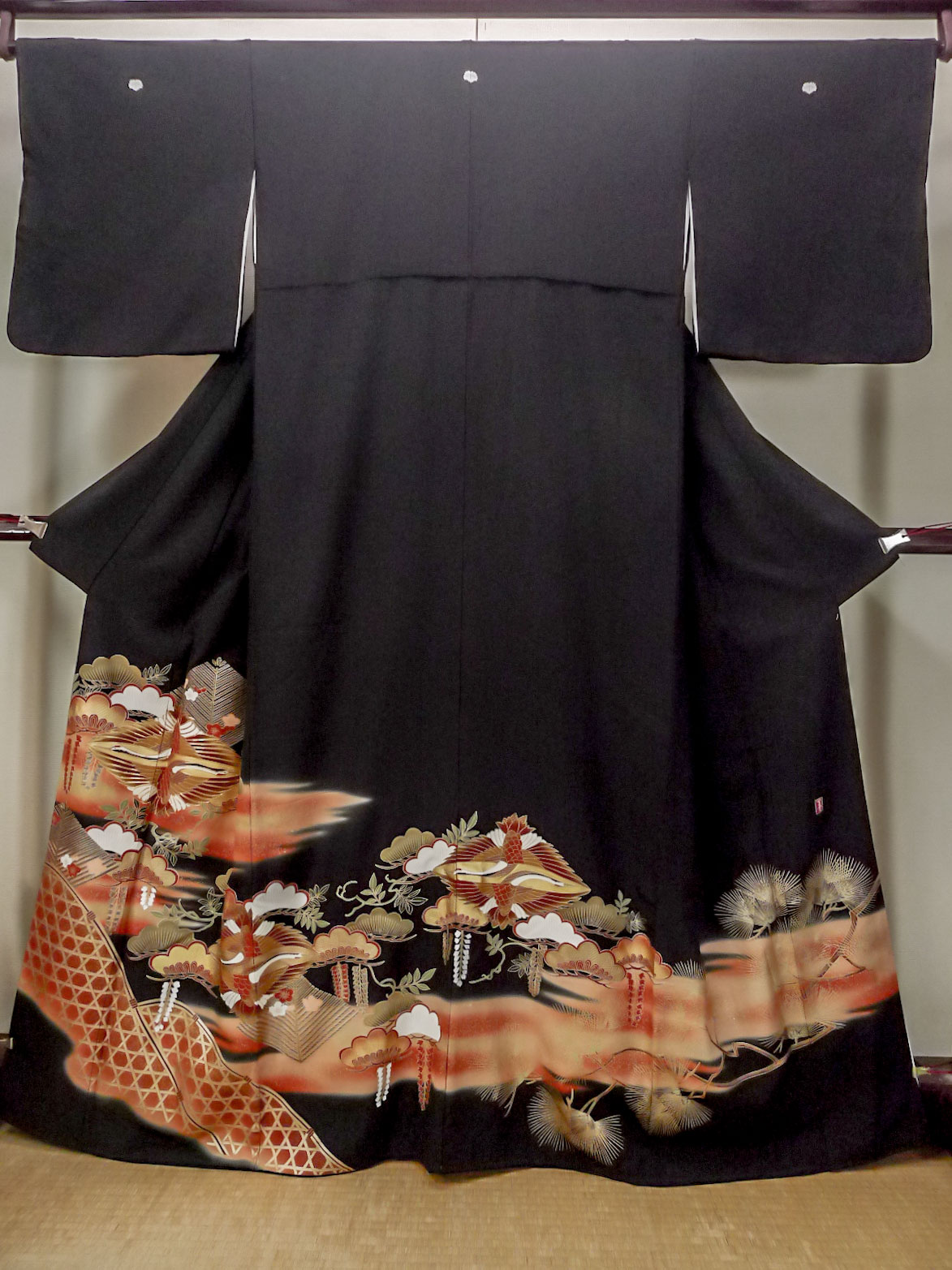 |
Kuro-Tomesode is the most prestigious "first formal wear" of kimono that can be worn by married women.
It is mainly worn by the bride's and groom's relatives and matchmakers for celebratory occasions such as weddings and wedding receptions. It is worn as an expression of gratitude and courtesy to the guests who have come to the wedding ceremony and reception. Kuro-Tomesode is a plain-weave silk kimono with a black base color and no based woven pattern, and has a hem pattern across the seam called an "Eba-pattern". Many of the "Eba-patterns" are wonderfully gorgeous with yuzen dyeing, embroidery, and gilding. Kuro-Tomesode has only five crests. It does not include three crests or a single crest like the Iro-Tomesode. |
|
| Iro-Tomesode | ||
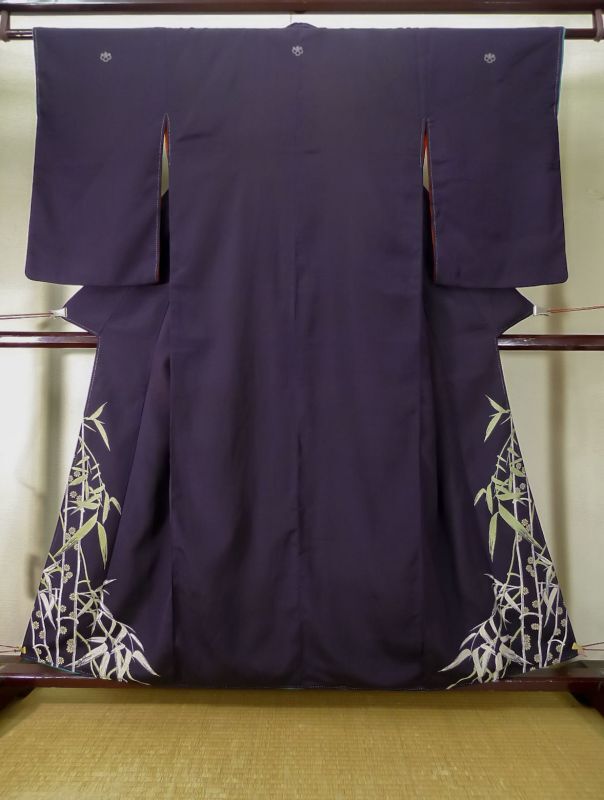 |
Iro-Tomesode is a formal dress that can be worn by both unmarried and married couples. There are three types of crests: one, three, and five. Kuro-Tomesode has the rule of five family crests, while the five crests of Iro-Tomesode is the first formal attire, and the three or one crest is the semi-formal attire. It is mainly worn by relatives at weddings. Although Kuro-Tomesode is fine for relatives, Iro-Tomesode is recommended for relatives to distinguish their appearance from that of the mother or grandmother.
To item pages of Tomesode => |
|
| Furisode | ||
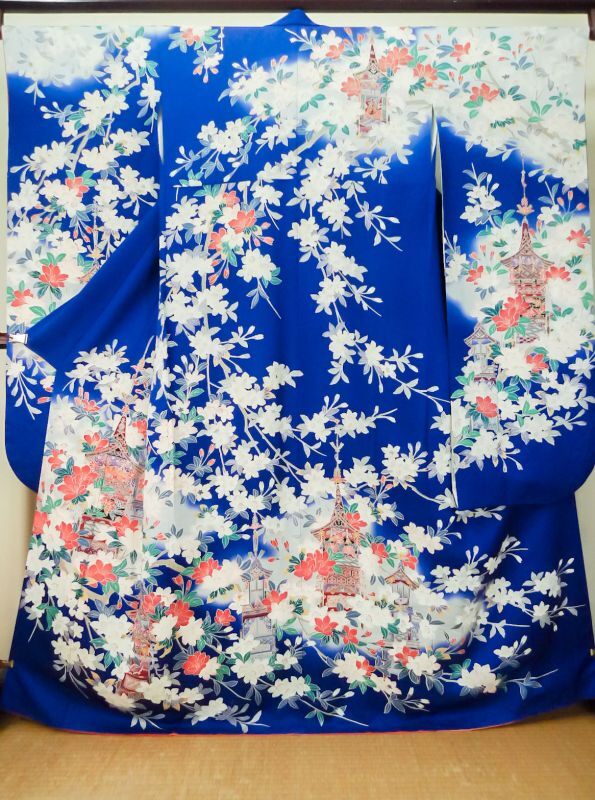 |
Furisode is the most prestigious formal kimono for unmarried women. It is a luxurious and gorgeous kimono with long sleeves and an overall "Eba-patterns". It is often worn at coming-of-age ceremonies to celebrate turning 20 and wedding receptions, and may also be seen at ceremonies and presentations.
To item pages of Furisode => |
|
| Houmongi | ||
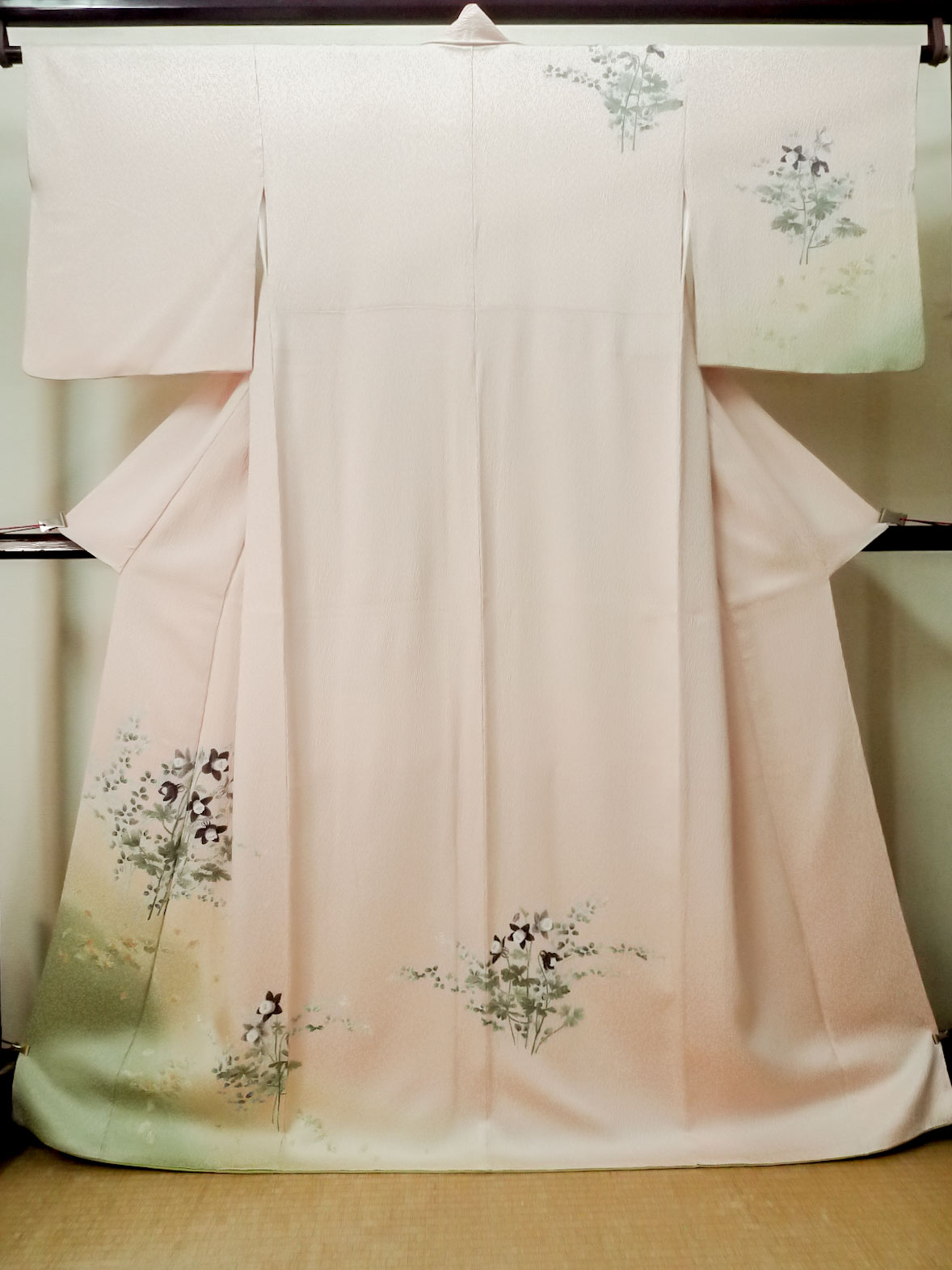 |
The feature of Houmongi is that the pattern is beautifully connected from the shoulders to the chest and sleeves as if it were a single picture, regardless of the seams (this is called the eba pattern). Kuro-Tomesode and Iro-Tomesode have "Eba-pattern", but the characteristic of Houmongi is that the pattern is also drawn on the upper half of the body, such as the chest and sleeves, in contrast to the hem of those Tomesode, which only has a pattern on the hem. "Houmongi" is a translation of "visiting dress," and the name became popular during the Meiji period (1868-1912) as social outfits for upper-class women. In terms of class, Houmongi is considered semi-formal to informal formal wear. (depending on matching Obi) It is best suited for celebratory occasions such as weddings and parties. For example, for a wedding reception, white, gold, and silver Obi can be worn together to create a highly prestigious outfit, while light-colored Obi can be worn together for a school entrance ceremony to create a flamboyant outfit.
To item pages of Homongi => |
|
| Tsukesage | ||
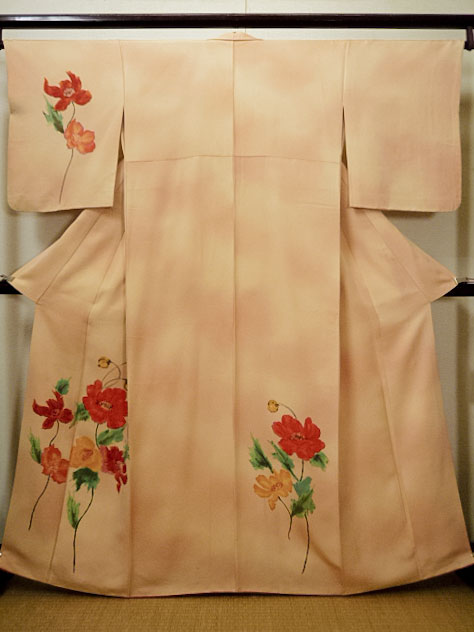 |
In Tsukesage, patterns are arranged in sections so that they do not cover the seams. Because the pattern straddles the seam, the Tsukesage is slightly lower in rating than Houmongi, which requires more time and effort to tailor.
It is a versatile kimono that can be worn from a relaxed to a glamorous setting by raising or lowering the class of the obi, such as with a gold and silver thread Furkuro-Obi and accessories for formal wear, or with a highly fashionable Fukuro-Obi for theater. To item pages of Homongi (including Tsukesage) => |
|
| Iromuji | ||
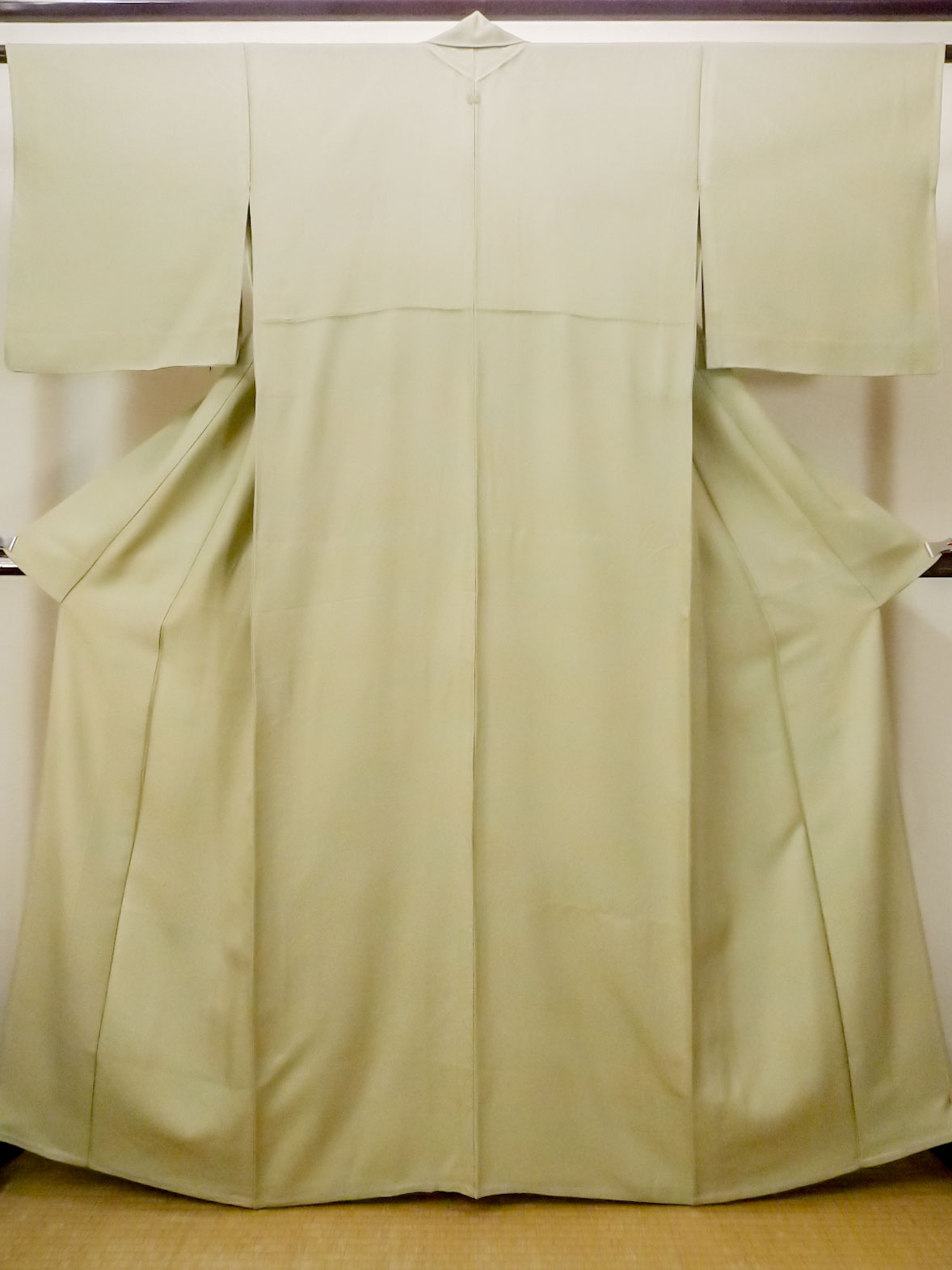 |
Iromuji is a kimono with no pattern and dyed in one color other than black. The presence or absence of family crests and the number of crests determines the class of the kimono, and it can be worn in a wide range of ways. Iromuji with five or three family crests is a semi-kimono and can be worn to weddings, entrance ceremonies, graduation ceremonies, and other such events if worn with a formal Obi. If you have only one crest, it is an informal wear equivalent to a Houmongi or a Tsukesage. To item pages of Iromuji => |
|
| Komon | ||
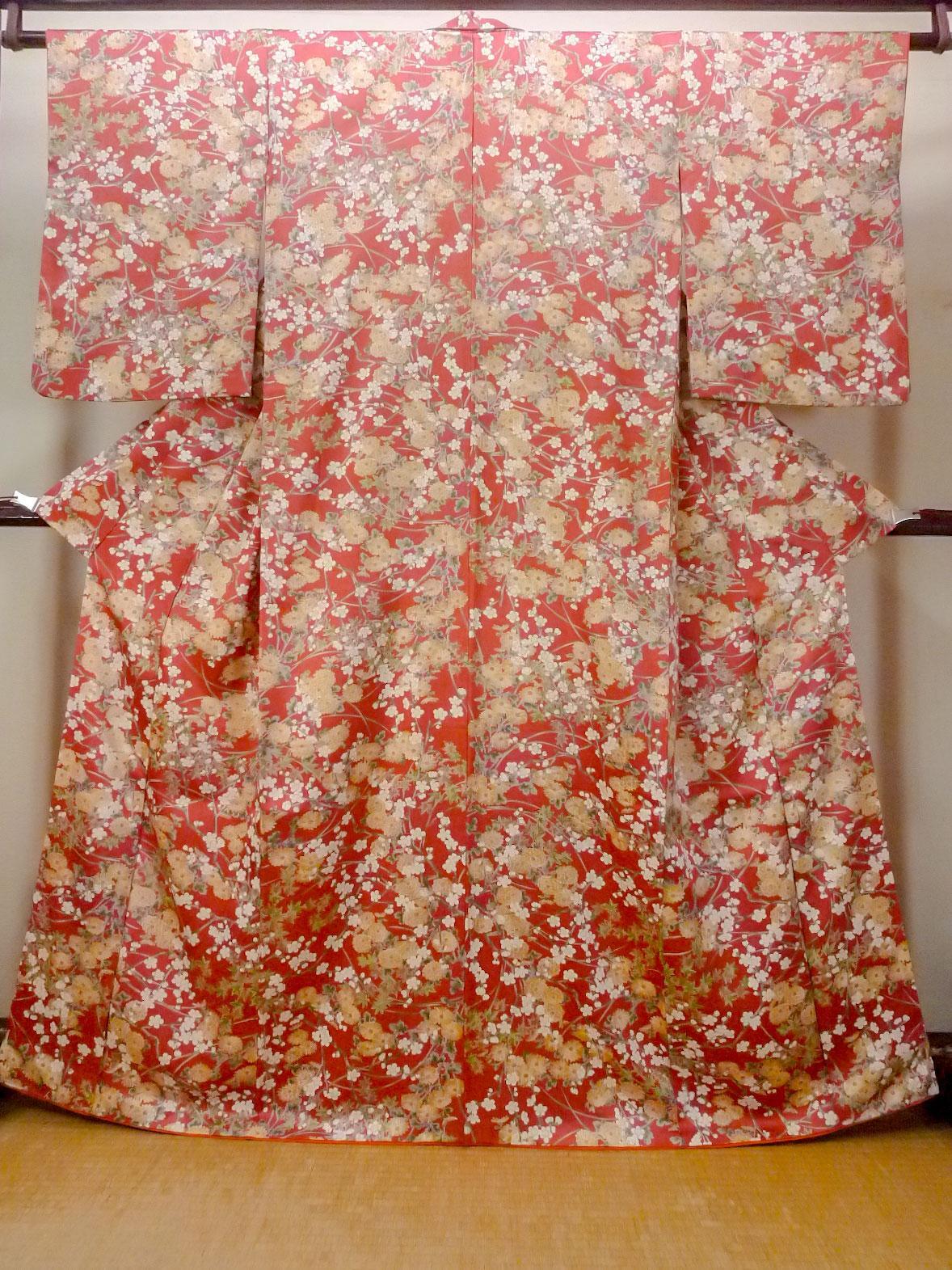 |
Komon is a casual kimono for everyday wear. Although it cannot be worn for formal occasions, it is dyed by stencil dyeing or hand-painting, and is a gorgeous kimono filled with so many traditional techniques that it is hard to believe that it is for casual wear.
It can be worn with a fashionable Fukuro-Obi, Nagoya-Obi, or Hanhaba-Obi in an unlimited number of ways. To item pages of Komon => |
|
| Tsumugi | ||
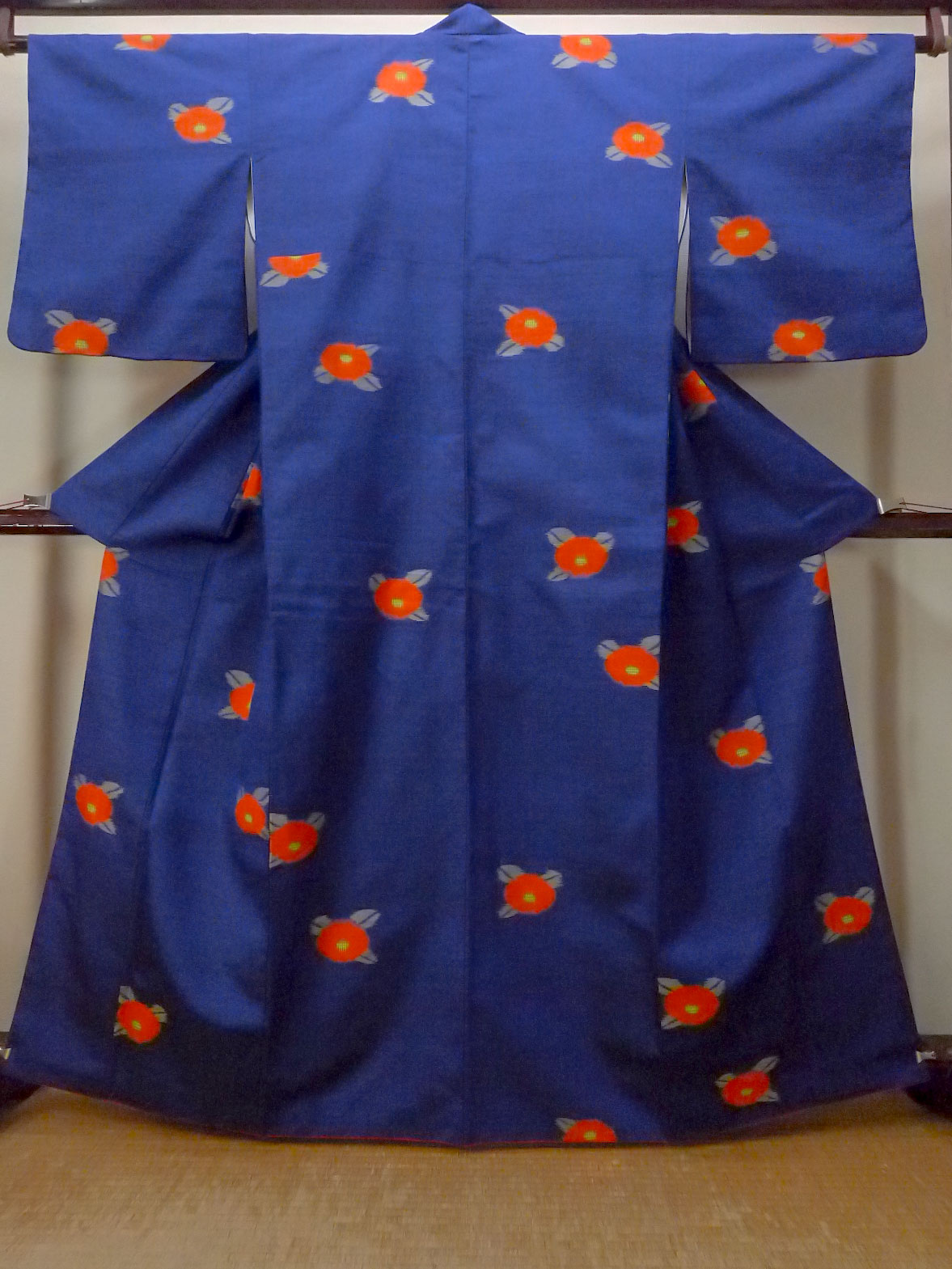 |
Tsumugi is a type of kimono woven mainly with yarn-dyed threads, and there are many Tsumugi production areas throughout Japan, such as Oshima Tsumugi and Yuki Tsumugi. Each has a different character and offers a unique luster and texture. To item pages of Tsumugi => |
|
| Hitoe (Category: Yukata-Hitoe) | ||
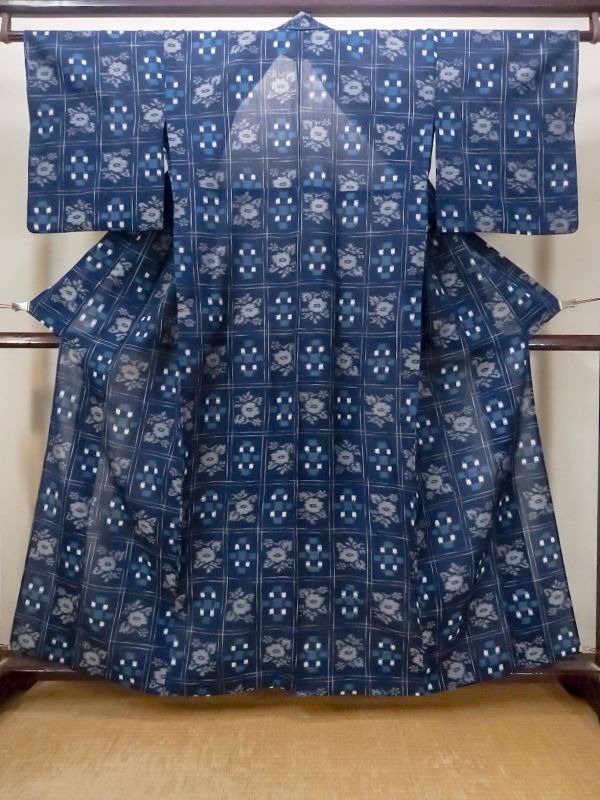 |
Hitoe is a lightweight kimono worn during transitional seasons, particularly in June and September in Japan. More precisely, it refers to a kimono made with a Hitoe-shitate (unlined) construction. Since it lacks a lining and is made from silk, linen, or synthetic fibers, it feels light and breathable. When kimono is tailored as Hitoe, it can be worn in both formal and casual settings, such as tea ceremonies, dining events, and strolls around town. It is typically worn with a Nagajuban (kimono undergarment) and paired with an obi such as the Nagoya-obi orFfukuro-obi. Hitoe represents the Japanese kimono culture’s appreciation for seasonal attire.
To item pages of Hitoe => |
|
| Yukata (Category: Yukata-Hitoe) | ||
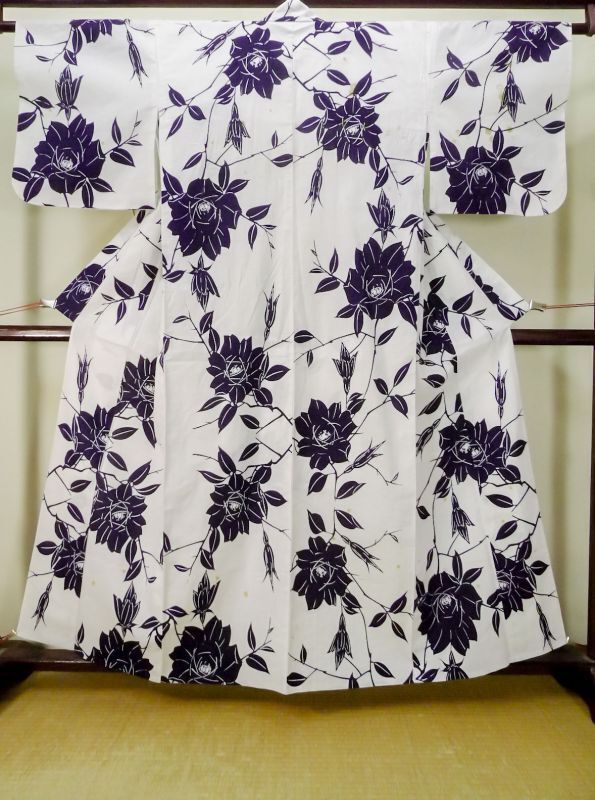 |
Yukata is a casual summer kimono, usually made of cotton or linen. Unlike other kimono, it is worn directly over the skin without a nagajuban, making it easy and comfortable to wear. A simple hanhaba-obi (half-width obi) is commonly used, and yukata are often worn at hot springs, summer festivals, and fireworks displays. Famous dyeing techniques used for yukata include aizome (indigo dyeing), chūsen (traditional stencil dyeing), and shibori (tie-dyeing). Originally developed as a post-bath garment in the Edo period, yukata has become an iconic symbol of Japanese summer and remains popular among both locals and tourists.
To item pages of Yukata => |
|
| Pour Dyed Yukata (Category: Yukata-Hitoe) | ||
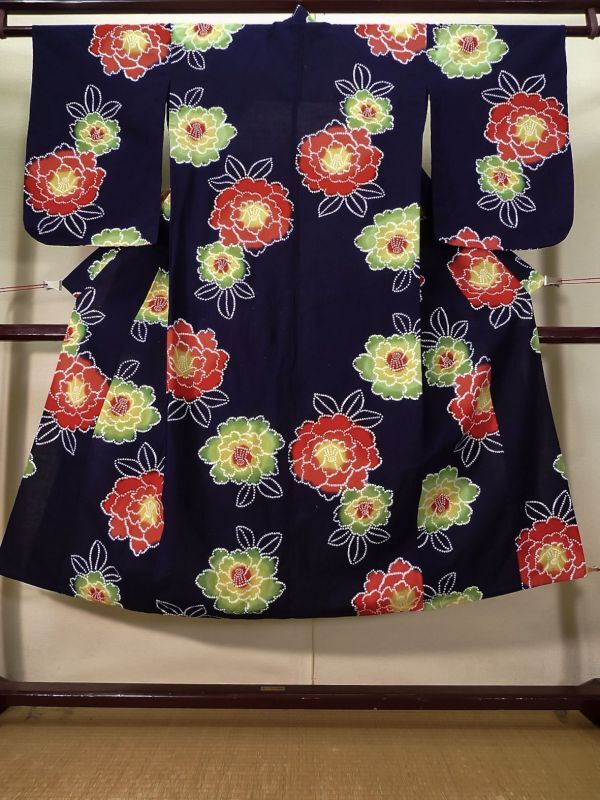 |
Chūsen(Pour Dyed Yukata) is a traditional Japanese dyeing technique that originated in the Meiji period, commonly used for yukata. In this process, fabric layers are stacked, and a resist paste is used to create raised barriers (called dote), into which dye is poured. This ensures the fabric is beautifully dyed on both sides.
Chūsen-dyed yukata are known for their soft texture, subtle color transitions, and unique hand-dyeing effects. The intricate patterns are visible on both sides of the fabric, showcasing detailed craftsmanship. This technique allows for vibrant multi-color designs and, combined with lightweight cotton, provides a cool and comfortable feel perfect for summer events like festivals and fireworks displays. To item pages of Pour Dyed Yukata => |
|
| Montsuki | ||
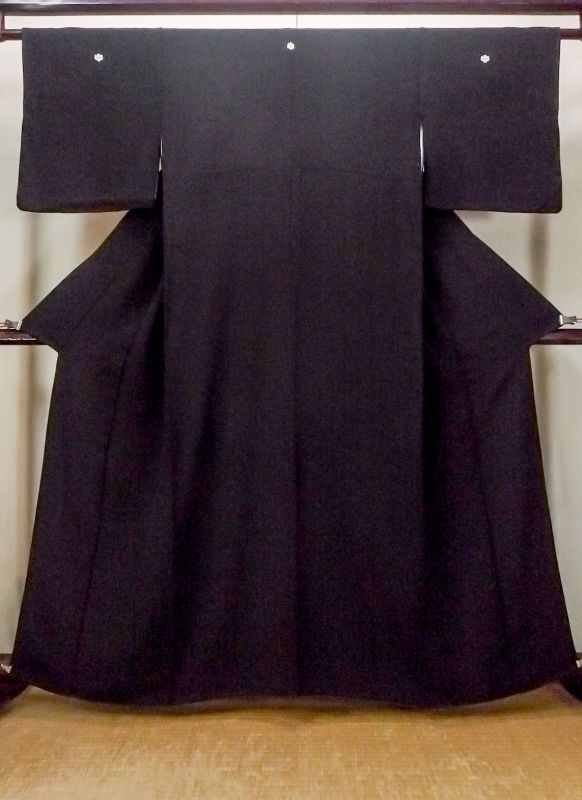 |
Kuro-montsuki is a formal kimono with five family crests (mon), making it the highest rank of formal attire (first ceremonial dress). It can be worn by both married and unmarried individuals. It is made from plain black fabric, and the five family crests, known as Hiyoku-mon, are dyed onto the kimono. While the Kuro-montsuki was originally designed for celebratory occasions, paired with a decorative obi and accessories, it is now most commonly worn as mourning attire (i.e., at funerals).
To item pages of Montsuki => |
|
| Haori | ||
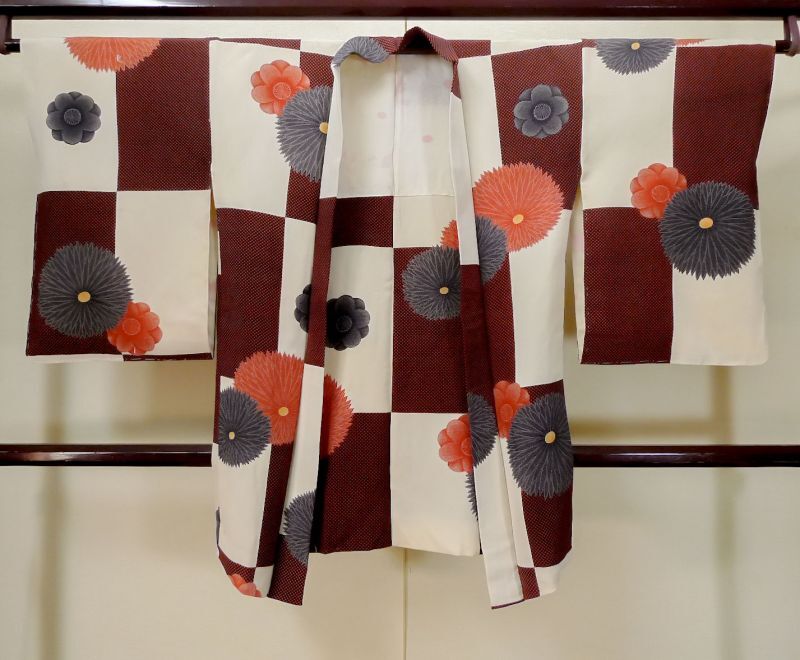 |
A haori is a traditional Japanese jacket worn over a kimono. It typically extends from the waist to the knees and is secured at the front with a haori-himo (haori cord). Originally serving as protection against cold and dust, it also functions as a stylish accessory that enhances the overall outfit. The haori originated in the Edo period, first worn by samurai as part of their kamishimo (formal attire). Over time, it became popular among townspeople as well. Today, both men and women wear haori, often incorporating them into casual or modern outfits, including mix-and-match styles with Western clothing. In formal settings, a montsuki haori hakama (haori with family crests and hakama) is traditionally worn, especially as formal attire for men.
To item pages of Haori => |
|
| Michiyuki | ||
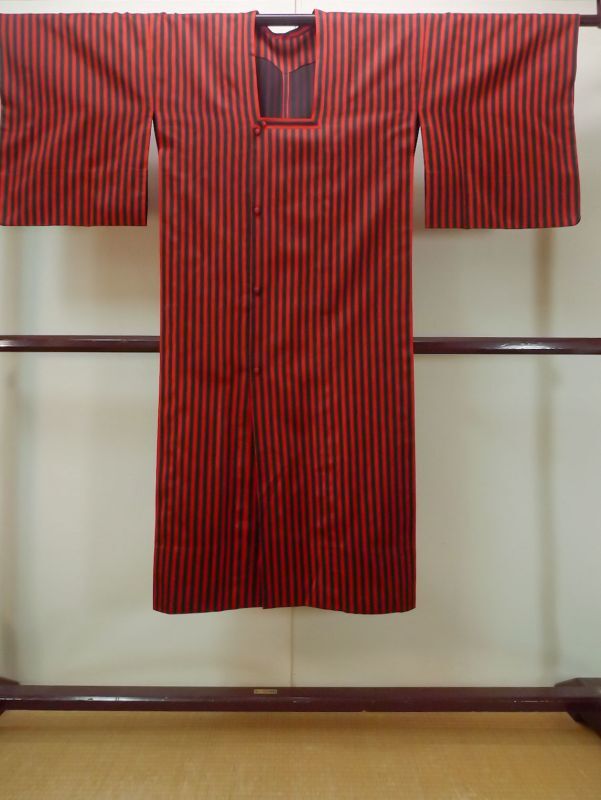 |
A michiyuki is a type of coat worn over a kimono, designed for warmth and protection from dust. It is characterized by its distinctive square neckline (michiyuki collar) and is typically fastened at the front with buttons or snaps. The length usually ranges from hip to knee, offering a light and comfortable fit suitable for outdoor wear.
Michiyuki coats can be worn in both formal and casual settings, with a variety of designs, including solid colors and patterns. When worn over houmongi (visiting kimono) or iro-muji (solid-colored kimono), they create an elegant impression. Today, michiyuki are not only used as traditional outerwear but are also sometimes incorporated into modern outfits, paired with Western clothing.
To item pages of Michiyuki => |
|
| Obi | There are three main types of Obis, Fukuro-obi, Nagoya-Obi, and Hanhaba-Obi. | |
| Fukuro-obi | ||
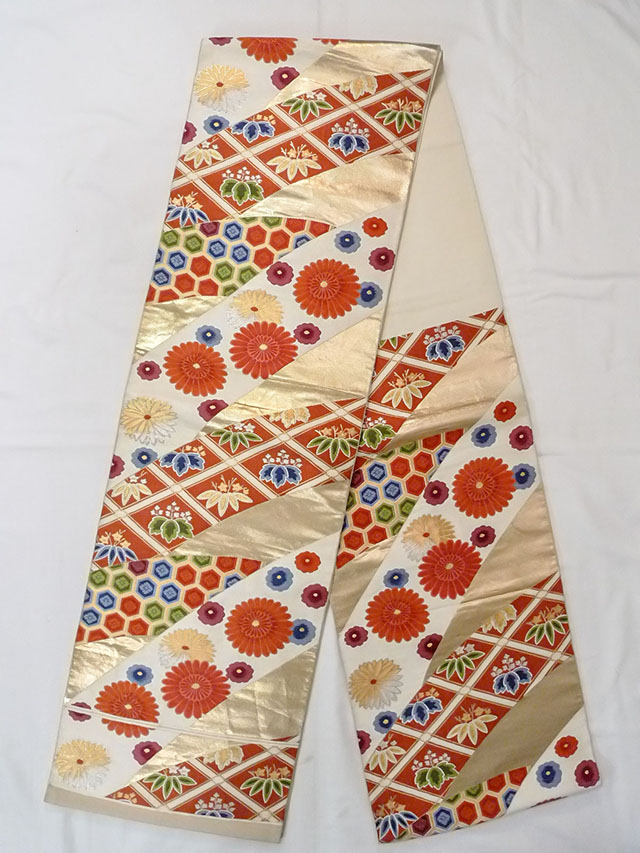 |
A fukuro-obi is a type of formal obi, mainly worn on special occasions. It has a double-layered structure and is typically longer than 4 meters. Many fukuro-obi feature elaborate woven patterns, often with gold and silver threads, making them ideal for weddings, ceremonies, and formal tea gatherings.
The most common way to tie a fukuro-obi is the Niju-daiko (double-layered drum knot), which enhances the formal look. For semi-formal occasions, simpler designs can be paired with houmongi or Iromuji. Combining elegance and prestige, the fukuro-obi is an essential accessory for formal attire. In recent years, more fashionable casual fukuro-obi have also become available.
To item pages of Fukuro-obi => |
|
| Nagoya-obi | ||
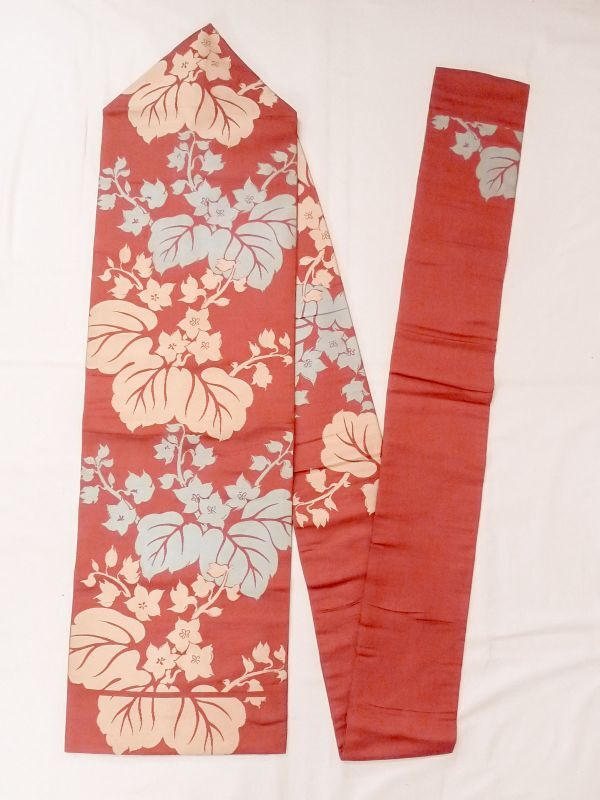 |
A Nagoya-obi is a type of obi commonly worn for everyday wear and semi-formal occasions. One of its key features is that the part wrapped around the waist is pre-folded to half-width, making it lighter and easier to tie. It is shorter than a fukuro-obi, typically around 3.6 meters in length.
The most common way to tie a Nagoya-obi is the Otaiko (single-layer drum knot), which creates a simple yet elegant look. It pairs well with Komon, Tsumugi ,Iromuji and Tsukesage, making it a popular choice for tea ceremonies, theater outings, and dining events. In recent years, fashionable designs have become more common, making Nagoya-obi a stylish option for casual kimono coordination.
To item pages of Nagoya-obi => |
|
| Hanhaba-obi | ||
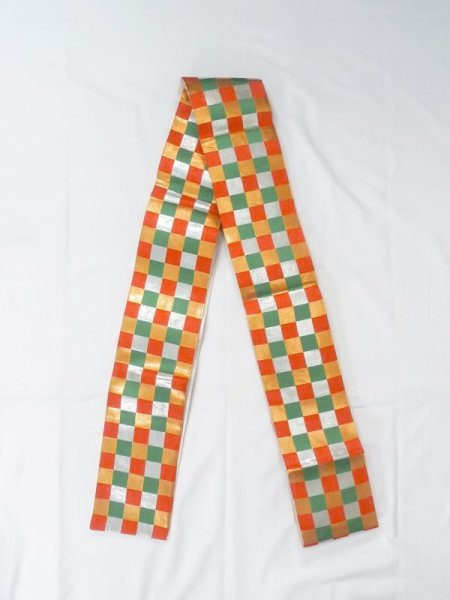 |
A Hanhaba-obi is a narrower obi, typically half the width of a standard obi, and is suitable for casual kimono or Yukata. It usually measures around 3 meters to 4 meters in length and is lightweight and easy to handle. The designs are generally simple, making it convenient for everyday wear, especially when paired with yukata or lightweight kimono.
The Hanhaba-obi can be tied in various ways, including the "bow tie" (Bunko knot), offering flexibility in styling. While it is relatively affordable, the Hanhaba-obi provides a refined yet casual look, making it popular for daily use. In recent years, it has become more diverse in design, and it is now also incorporated into casual fashion.
To item pages of Hanhaba-obi => |
|
| Juban | ||
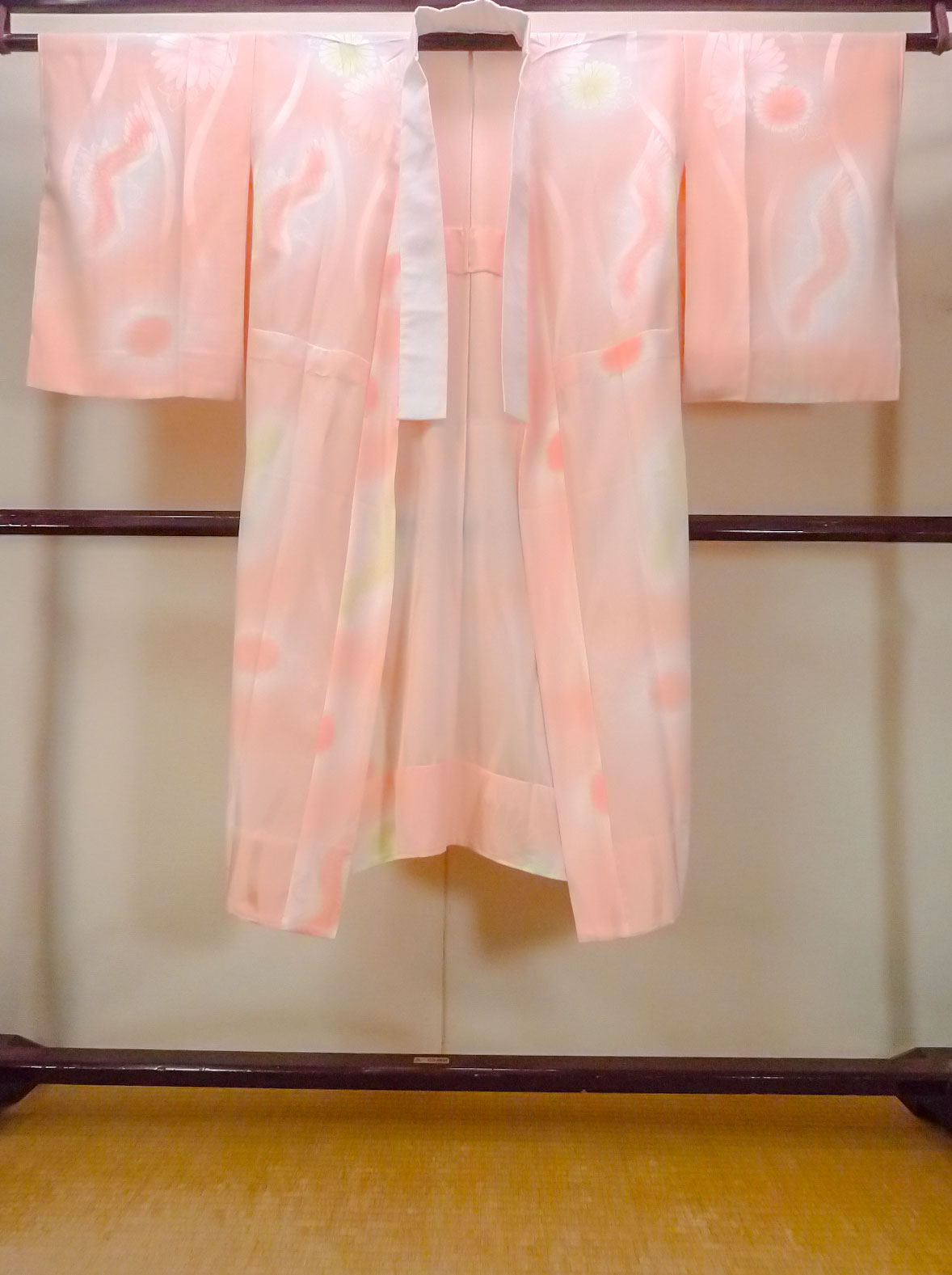 |
A juban is a type of undergarment worn underneath a kimono to prevent direct contact between the kimono and the skin. By wearing a juban, it helps protect the kimono from sweat and oils, keeping it clean. It also enhances the comfort of wearing the kimono and helps prevent it from shifting out of place. Juban are typically made from materials such as silk or cotton, and are often crafted from fabrics that are gentle on the skin.
To item pages of Juban => |
|
| Men's kimono | ||
| Men's Haori | ||
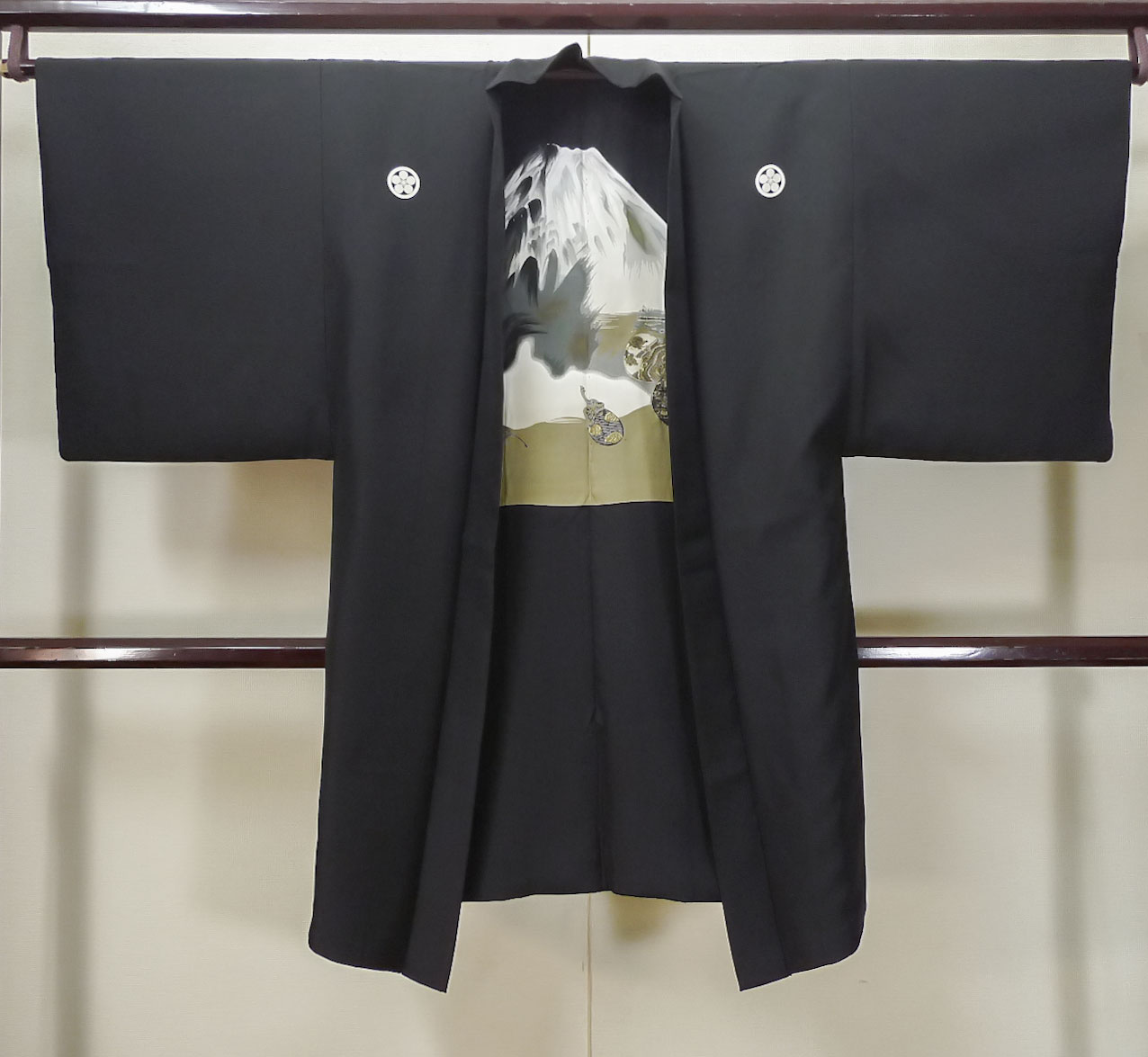 |
A Haori is a traditional Japanese garment worn over a kimono, similar to a jacket. Men's haori can be worn on both formal and casual occasions. Originally developed as a protective layer against the cold or dust, Haori became popular among samurai during the Edo period and later spread to the general public.
The inside of a Haori features a lining called Haura (meaning a lining), which often showcases decorative artwork. In the Edo period, stylish men enjoyed adding playful designs to their Haura, including landscapes, animals, ukiyoe-style illustrations, and even witty or satirical motifs. Since these designs were hidden from view when worn, they served as a discreet yet refined form of self-expression. Even today, unique Haura designs allow wearers to showcase their individuality through their attire.
To item pages of Men's Haori => |
|
| Men's Kimono | ||
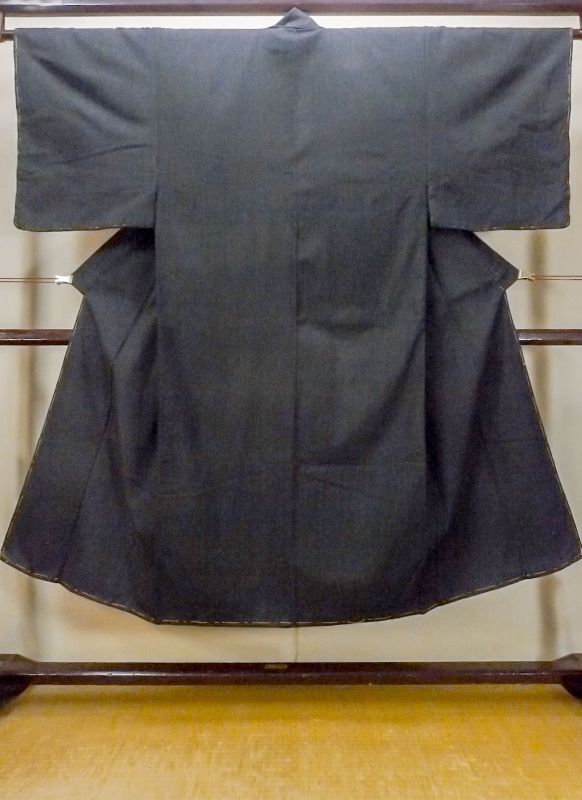 |
Men's kimono is a traditional Japanese garment characterized by its simple and understated design. It is worn for both formal and casual occasions, with solid colors, fine stripes, and subdued tones such as black, navy, brown, and gray being the most common. Formal kimono typically feature dark colors and often include family crests. The "kuro montsuki haori hakama" (black crested kimono with haori and hakama) is considered the most prestigious formal attire. It is worn with a kaku obi (stiff belt), white tabi socks, and zori sandals. In contrast, casual kimono are made from fabrics like tsumugi (pongee silk) or cotton and come in a wider variety of colors and patterns. The obi and footwear styles are more relaxed, allowing for a comfortable and stylish everyday look.
To item pages of Men's Kimono => |
|
| Men's Juban | ||
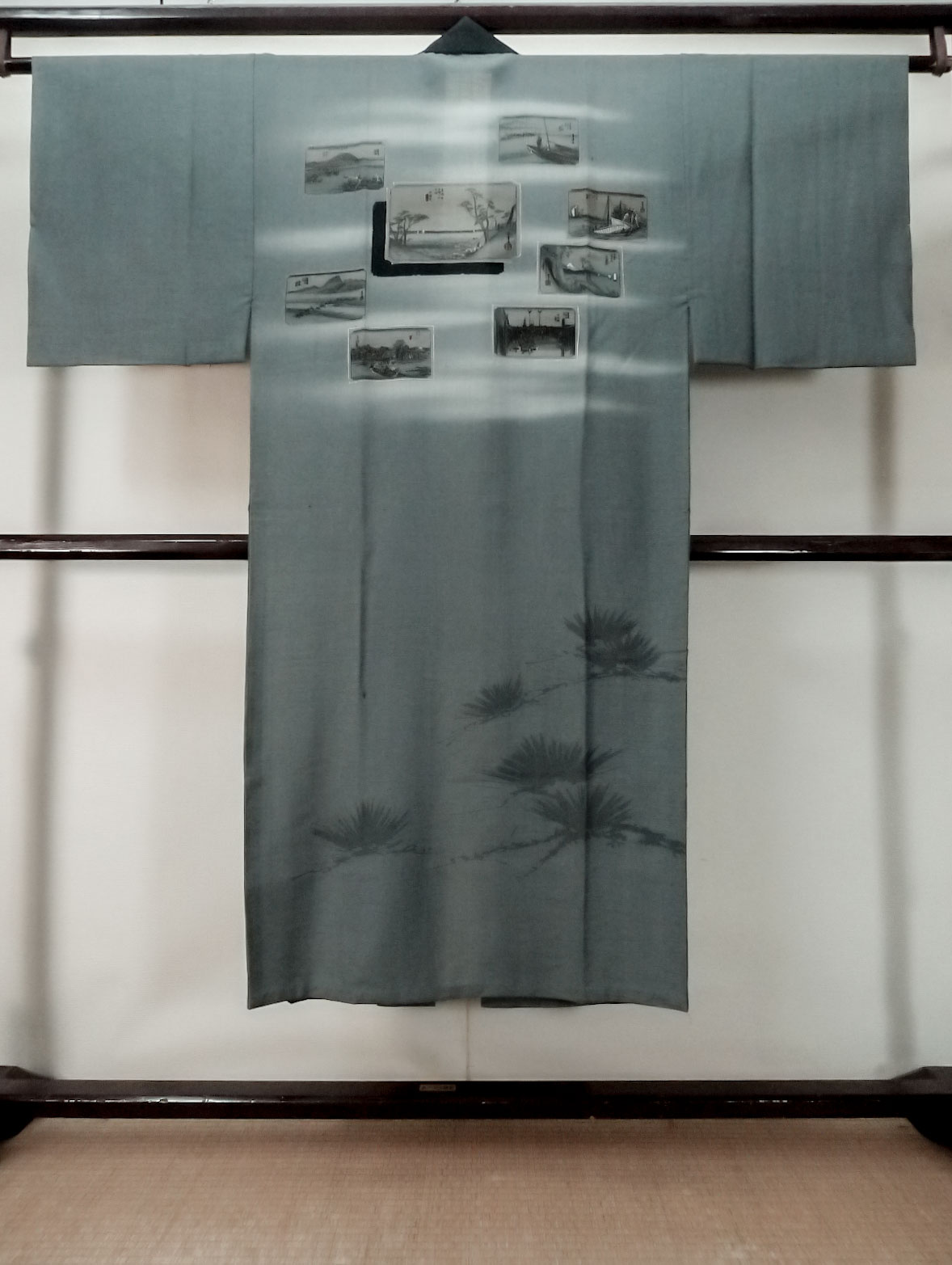 |
A Juban is an undergarment worn beneath a kimono, serving to protect the kimono from sweat and dirt while also helping to maintain its shape. It is important for keeping the kimono well-fitted and neat. During the Edo period, the government issued luxury prohibition laws to restrict extravagant clothing. However, townspeople cleverly used their Juban to express style, incorporating vibrant colors and patterns in hidden areas of their attire. This tradition continues today, with the Juban being an essential part of kimono dressing and a subtle way to showcase personal flair.
To item pages of Men's Juban => |
|
| Men's Hitoe | ||
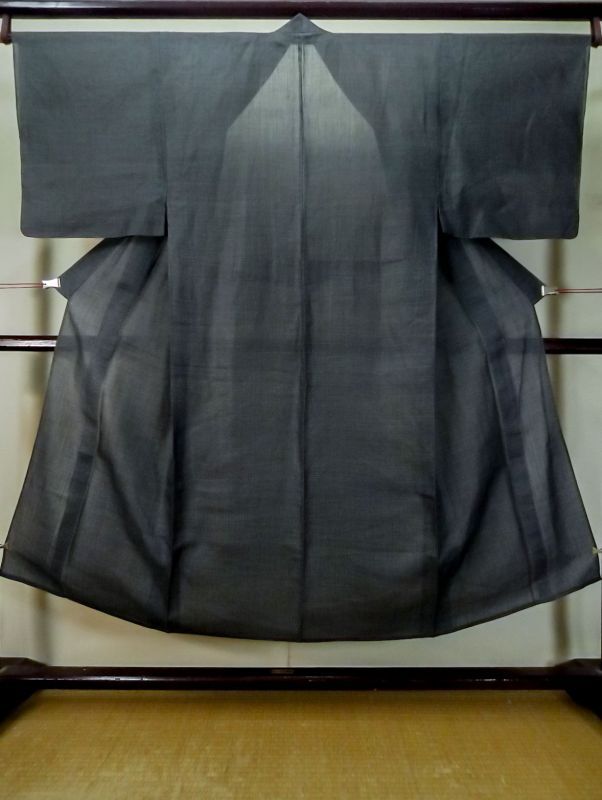 |
A Hitoe kimono is an unlined, single-layer kimono. While lined kimono are typically worn in autumn and winter, Hitoe is ideal for late spring to early summer (May–June) and early autumn (September) due to its lightweight construction. Hitoe kimono are made from breathable fabrics such as "Ro gauze" and "Sha", which have a slightly sheer quality, or thin cotton and tsumugi silk for a comfortable fit. While not commonly worn for formal occasions, Hitoe is a stylish and breezy choice for casual settings. Today, more people enjoy wearing Hitoe based on climate and personal preference.
To item pages of Men's Hitoe => |
|
| Men's Obi | ||
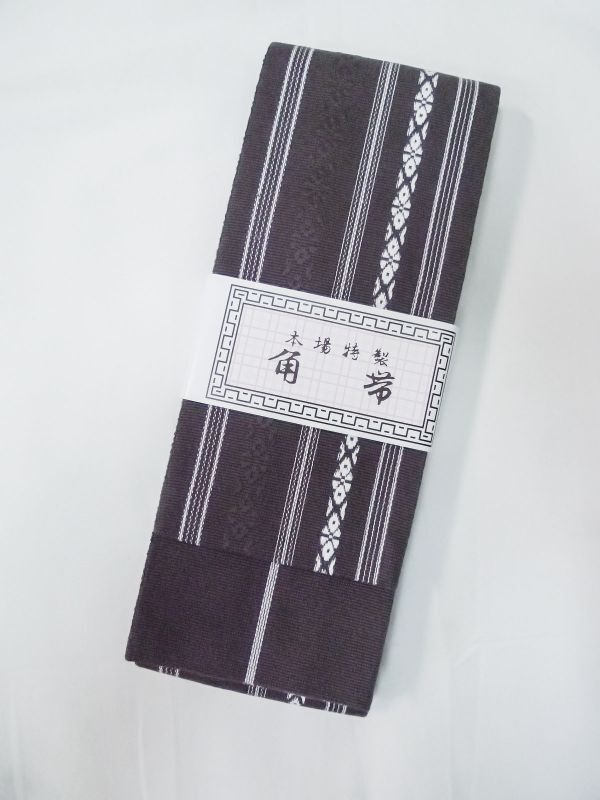 |
A Men's Obi is called Kaku obi which is a stiff, narrow belt worn by men with kimono. It is approximately 8–10 cm wide and 3.5–4 meters long, providing a firm and structured fit that enhances the overall appearance of traditional attire. Kaku obi come in various weaves, making them suitable for both formal and casual wear. For formal occasions, plain or subtly patterned obi are preferred, while casual settings allow for more colorful and expressive designs. The choice of kaku obi significantly influences the overall impression of a kimono ensemble, making it an essential accessory in men's traditional fashion.
To item pages of Men's Obi => |
|
| Men's Yukata | ||
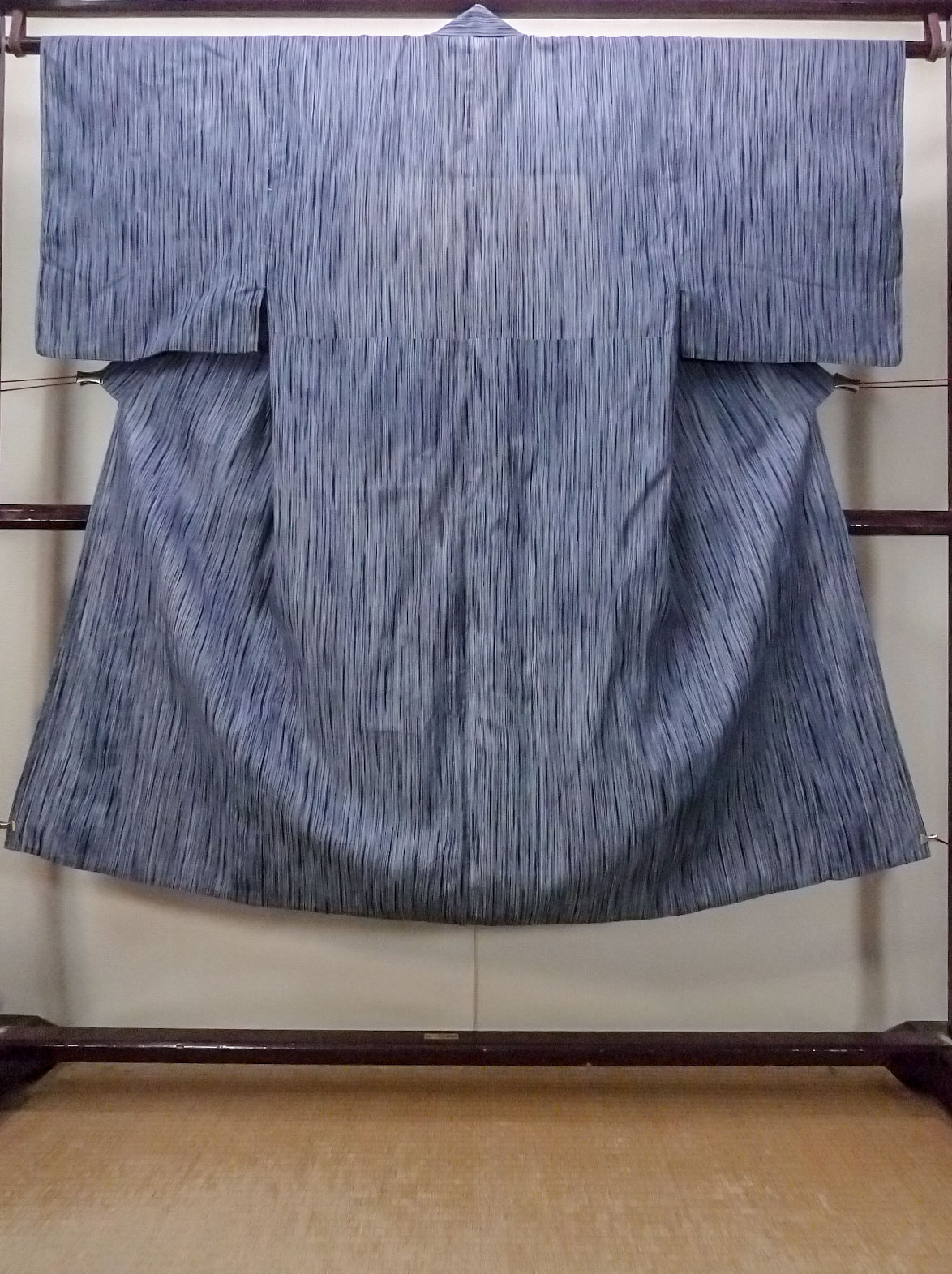 |
A Men's Yukata is a casual summer kimono made from lightweight, breathable fabrics such as cotton or linen. It is commonly worn at summer festivals, fireworks displays, and hot spring resorts, making it a popular and easy-to-wear traditional garment. Men’s Yukata typically come in subdued colors like navy, black, white, and gray, with simple patterns such as stripes or checks. It is usually worn with a simple Kaku-Obi, and paired with geta sandals, often without socks. While women’s yukata often feature colorful patterns and decorative obi tying styles, men’s yukata emphasize simplicity and a refined, effortless elegance.
To item pages of Men's Yukata => |
|
| Kimono accessories : Obiabe | ||
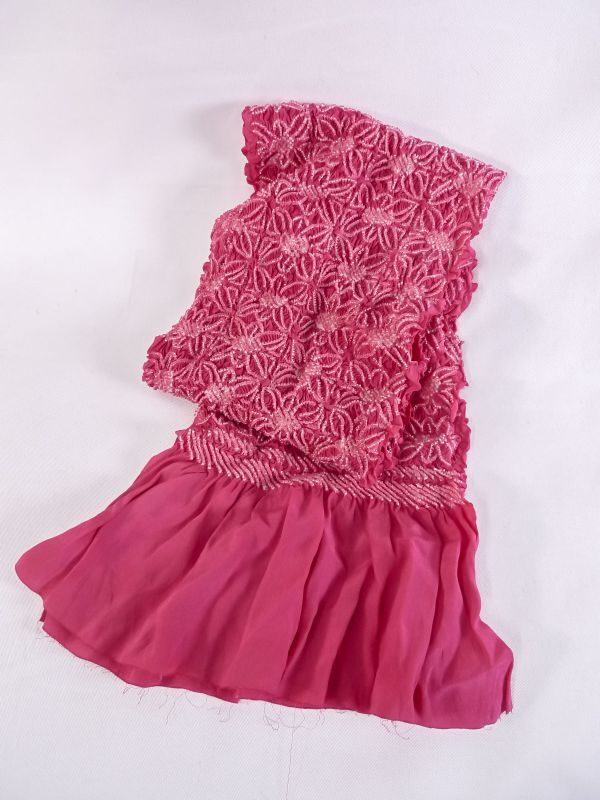 |
An obiage is a decorative cloth used to cover "obimakura"(a small cushion that supports the obi) and to neatly finish the upper part of the obi. Although only a small portion is visible, its color and pattern serve as an accent, significantly influencing the overall look of a kimono outfit. Obiage are typically made from silk or chirimen (crepe fabric). For formal occasions, white or subtle designs such as solid colors or embroidered patterns are preferred, while casual kimono styles allow for more vibrant colors and playful patterns. The way an obiage is tied and displayed adds elegance or a touch of personality to the wearer's appearance, making it an essential accessory in kimono fashion.
To item pages of Obiage => |
|
| Kimono accessories : Obijime | ||
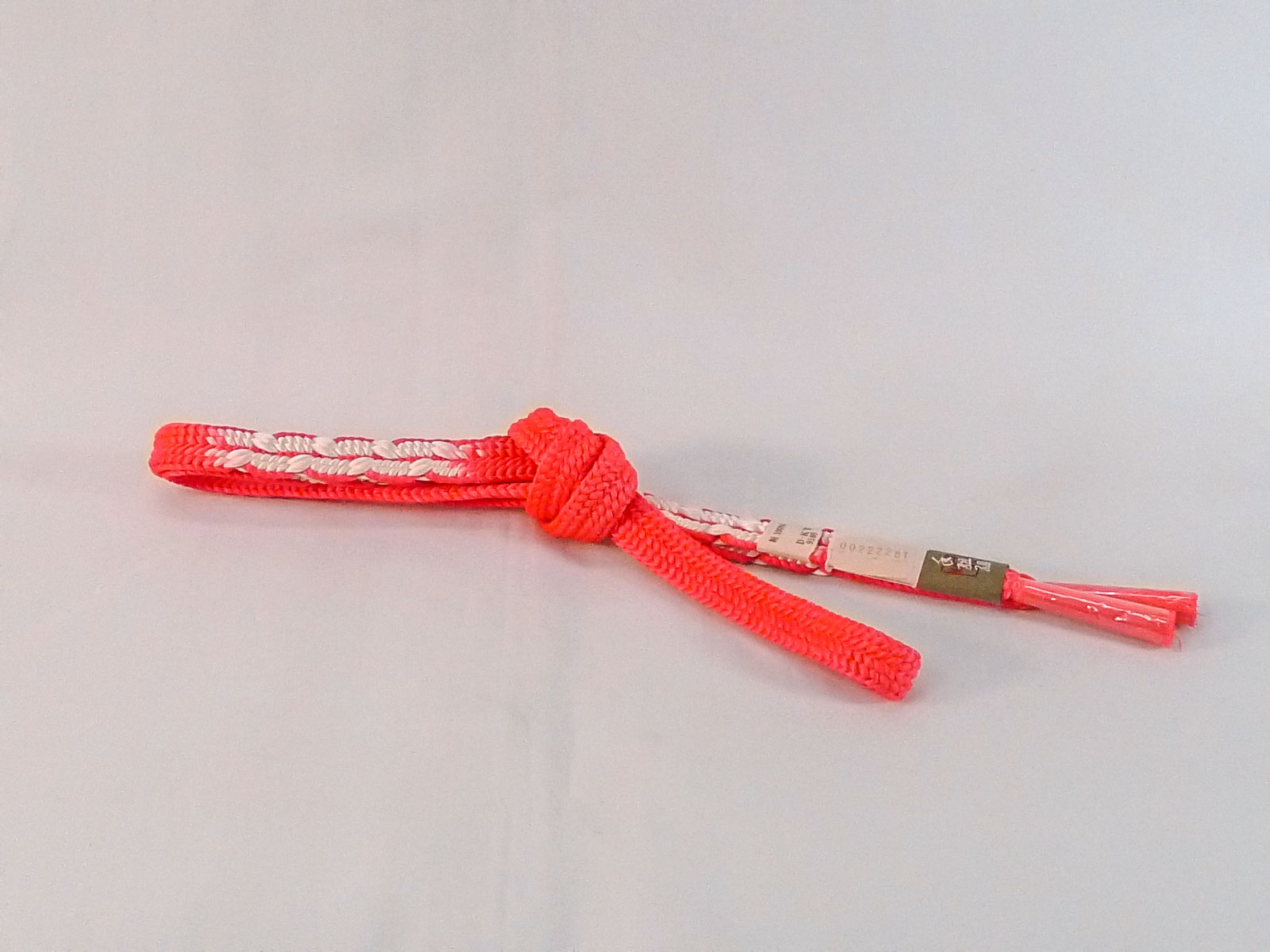 |
An obijime is a decorative, cord-like accessory tied around the center of the obi. It not only helps secure the obi in place but also serves as an accent, adding a finishing touch to the kimono ensemble. Depending on its design and tying style, an obijime can be used for both formal and casual occasions. Obijime are typically made from silk kumihimo (braided cord). For formal settings, thicker, sturdier obijime with gold or silver threads are preferred, while casual outfits often feature thinner, softer cords with vibrant colors and patterns.
The choice of obijime significantly influences the overall look of a kimono, making it an essential element in coordinating a stylish and polished appearance.
To item pages of Obijime => |
|
| Kimono accessories : Haorihimo | ||
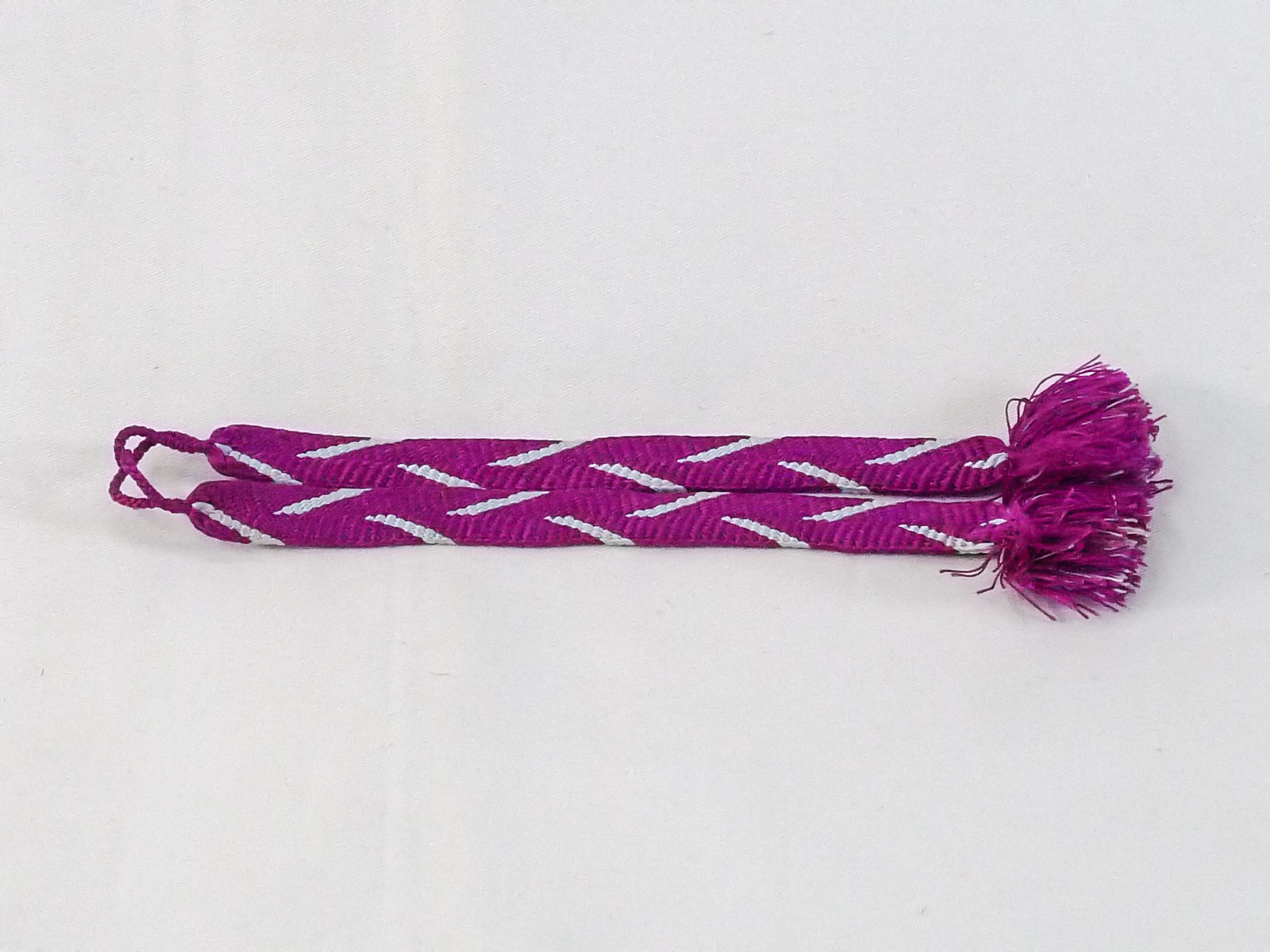 |
A haori himo is a decorative cord used to fasten the front of a haori. It serves both a functional and aesthetic purpose, keeping the haori in place while also adding an accent to the overall look. The cord is attached to loops on either side of the haori and is tied at the front. Haori himo are typically made from kumihimo (braided cords) or silk. For formal occasions, simple designs in subdued colors like white or black are preferred, while casual styles allow for more colorful patterns and decorative tassels. Men’s haori himo tend to be simple and firm, whereas women’s haori himo are often more decorative and elaborate. As a key accessory in kimono fashion, the haori himo adds a touch of personality to an outfit, and different tying styles can subtly change the overall impression.
To item pages of Haorihimo => |
|
| Kids kimonos girls and boys | ||
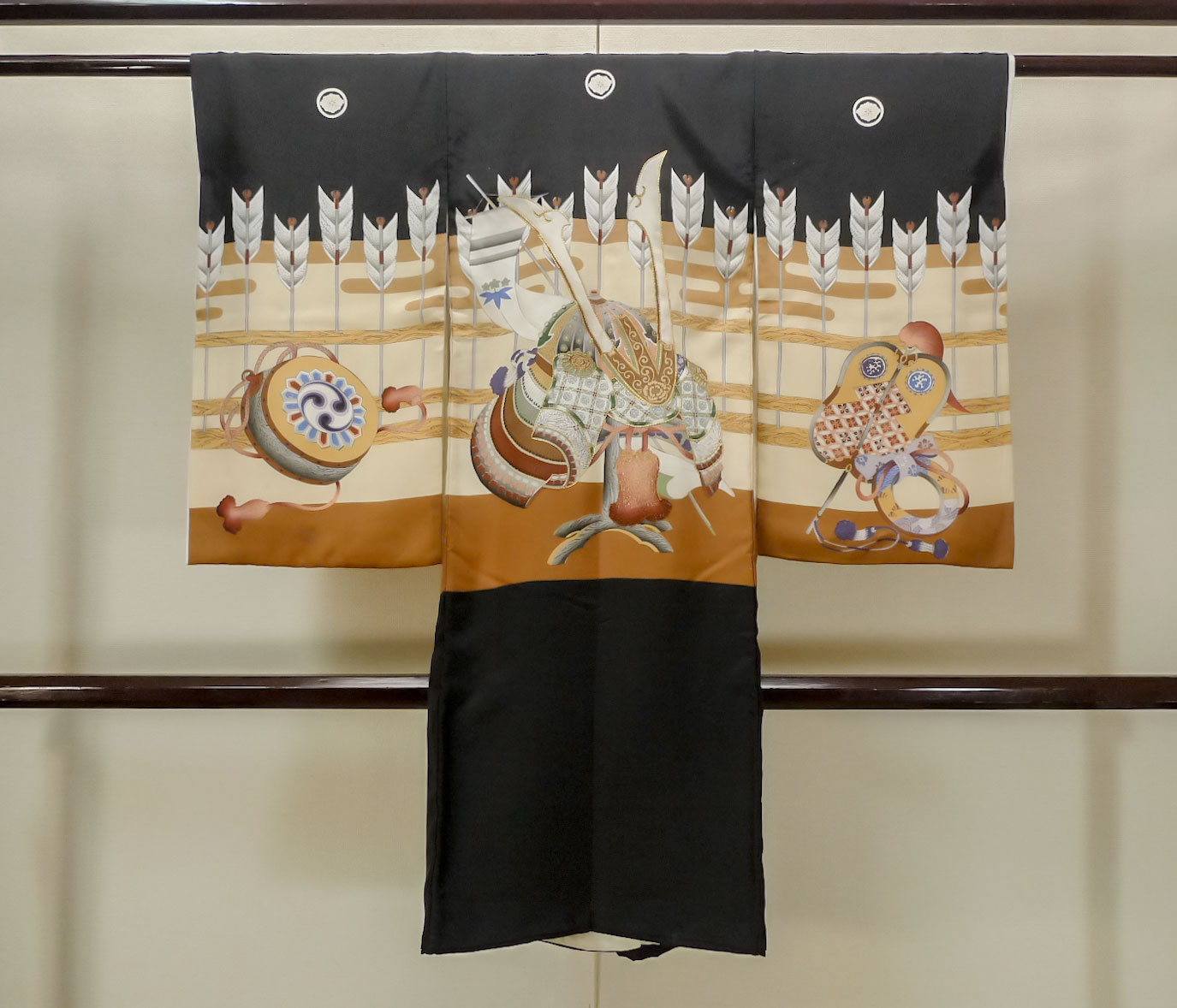 |
The definition of children's kimono generally applies to children aged from 3 years old to about 12 years old. Boys typically wear kimono for celebrations like Shichi-Go-San (a traditional rite of passage for 3, 5, and 7-year-olds), with 3-year-old and 5-year-old boys commonly wearing them, and 7-year-old girls often wearing more elaborate kimono for the same celebration. While children of other ages also wear kimono for daily life or special occasions, this age range is typically where kimono sizes and designs are targeted. Children’s kimono are sized according to age and often made from softer, more comfortable materials for young children. The designs and colors tend to be bright and playful, reflecting a more cheerful and adorable aesthetic.
To item pages of Girls => To item pages of Boys => |
|
| Coordinate set | ||
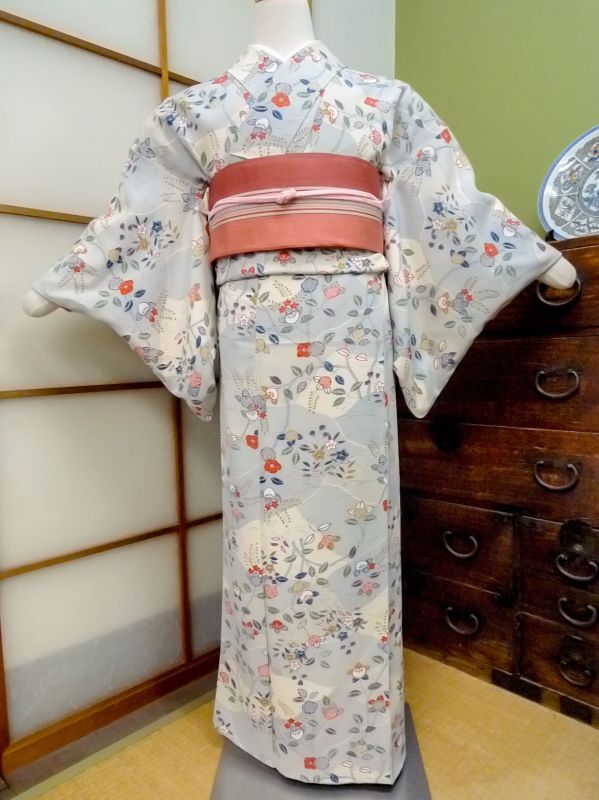 |
A coordinate set is a collection of essential items needed to wear a kimono. It is designed with a well-balanced combination of colors and patterns, making it easy for beginners to wear. The set typically includes a kimono, an obi, and accessories such as an obiage and obijime. For formal occasions, elegant and refined designs are chosen, while casual styles allow for more playful colors and patterns. Since the items are pre-matched, creating a cohesive kimono ensemble is effortless, making it a convenient option for beginners as well.
To item pages of coordinate set => |
|
| Cutting cloth | ||
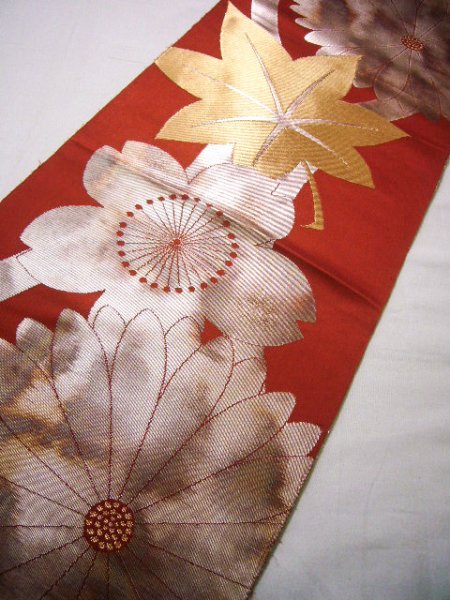 |
Cutting cloth is fabric scraps left over after cutting larger pieces of cloth. At our shop, we offer fabric cut from obi as well as unsewn kimono fabric (tanmono) before tailoring, providing high-quality materials with the unique weaves and patterns characteristic of traditional textiles. These luxurious fabrics are ideal for crafting accessories, remaking garments, or creating patchwork and interior decorations. With the refined textures and elegant designs of obi and kimono fabric, they are a popular choice among craft enthusiasts looking to incorporate traditional Japanese aesthetics into their creations.
To item pages of cutting cloth => |
|
| Antique | ||
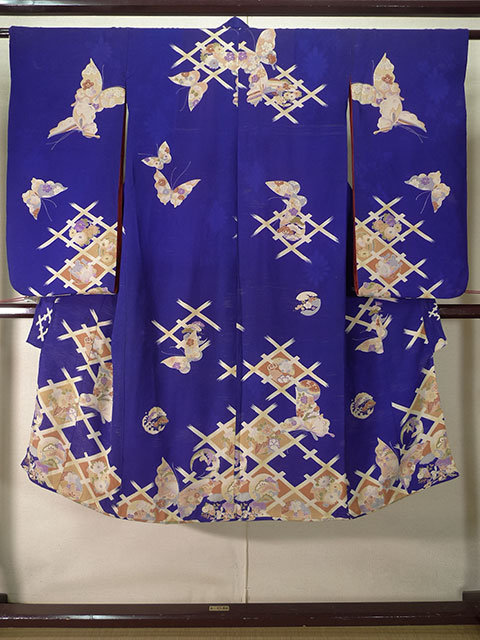 |
An antique kimono refers to kimonos made primarily during the early Showa period (pre-World War II), though some pieces date back to the Taisho period (1912–1926). These kimonos are known for their delicate dyeing and weaving techniques, with unique colors, patterns, and designs that are rarely seen in modern pieces. Many antique kimonos hold significant artistic value. While you may find smaller sizes or signs of fabric wear due to aging, these kimonos allow you to appreciate the distinctive designs and textures from that era. Antique kimonos are not only highly collectible but also make a striking addition to contemporary wardrobes, allowing wearers to create a unique, personal style.
To item pages of antique => |
|
